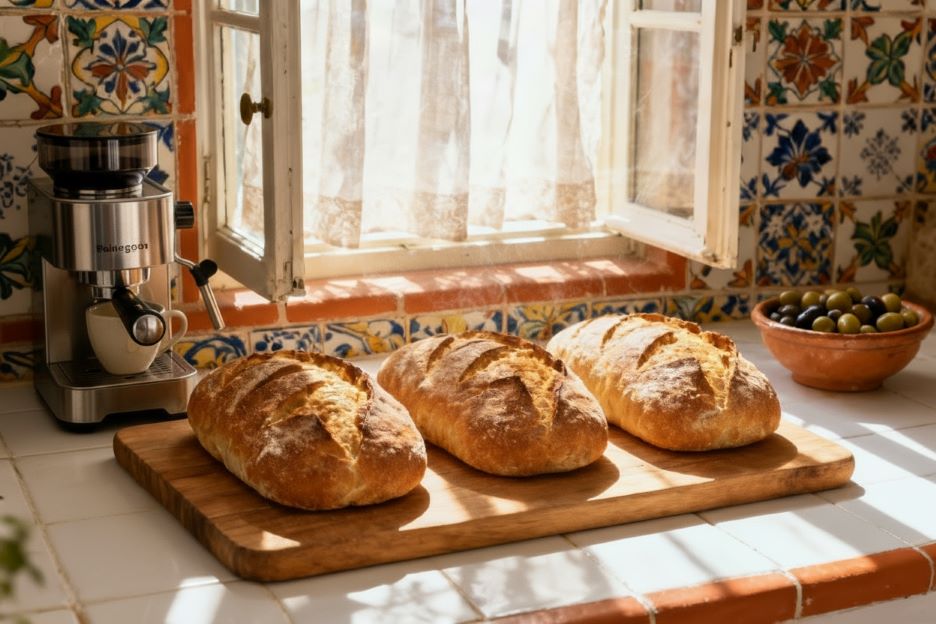Ingredients
Equipment
Instructions
- Activate Yeast (if using active dry yeast): In a small bowl, combine yeast with a few tablespoons of lukewarm water and a pinch of sugar. Let it sit for 5–10 minutes until foamy.(Skip this step if using instant yeast — just mix it in with the flour.)
- Make the Dough: In a large mixing bowl (or stand mixer), combine flour and salt. Add the activated yeast (or instant yeast), water, and olive oil. Mix until a sticky dough forms.Note: The dough should be soft and slightly tacky but not too wet.
- Knead the Dough: Knead for 10 minutes by hand or 6–8 minutes with a dough hook on medium speed until the dough is smooth and elastic.
- First Rise (Bulk Fermentation): Place dough in a lightly oiled bowl, cover with a damp towel or plastic wrap. Let it rise at room temperature for 2 hours, or until doubled in size.
- Shape the Loaves: Gently turn dough onto a floured surface. Divide it into 2 equal portions. Shape each into a rough oval or oblong loaf (filone means "thread" or "line").Be careful not to deflate the dough too much.
- Second Rise: Place loaves on a parchment-lined baking tray or in a floured proofing cloth. Cover with a towel and let rise for 1.5 to 2 hours, until puffy.
- Preheat Oven: Preheat oven to 220°C / 430°F.Place a baking stone or an inverted baking sheet inside.Optional: Place a tray of hot water at the bottom of the oven for steam (for a better crust).
- Score and Bake: Dust the tops with a bit of flour or semolina.Slash each loaf with a sharp knife or razor blade (one long cut down the middle or a few diagonal slashes).Slide onto the hot stone/tray and bake for 25–30 minutes until golden brown and hollow-sounding when tapped.
- Cool: Let cool on a wire rack for at least 30 minutes before slicing.
Notes
Use bread flour or Type 00 flour for the best texture, it gives the dough enough gluten for that chewy crumb and crust.
Hydration: The dough should be slightly sticky but manageable. Don’t add too much flour when shaping; a light dusting is enough.
Room temperature water helps activate the yeast properly. Avoid using hot water as it can kill the yeast.
First rise: Let the dough double in size during bulk fermentation, this develops flavor and gluten structure.
Gentle handling: When shaping the loaves, avoid pressing out all the air. This keeps the crumb airy and light.
Steam in the oven: Adding steam (by placing a pan of hot water or spraying water) during the first 10 minutes of baking helps create a crisp, shiny crust.
Scoring: Make confident, quick slashes with a sharp blade to control how the bread expands in the oven.
